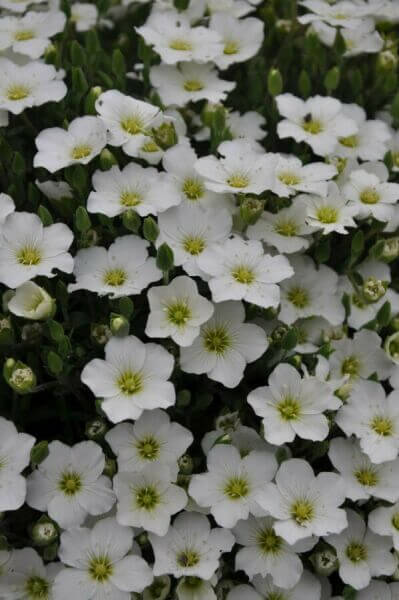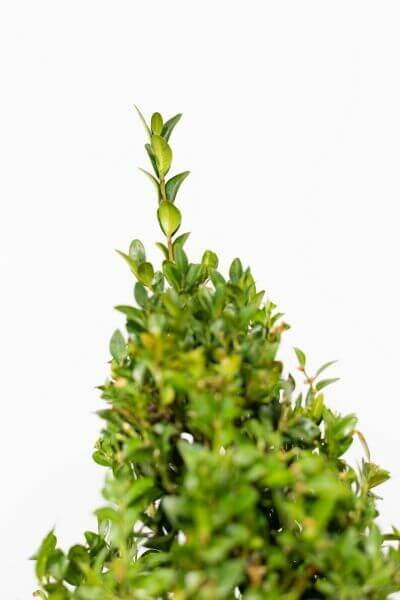Hedge Plants For Summer Blooms
Enhance your garden's attraction with rich hedge varieties such as Yew (Taxus), Thuja, Laurel, Photinia, and Bamboo, commemorated for their structural integrity and environmental advantages.
Yew and Thuja provide evergreen protection and winter resilience, while Laurel provides quick development and broad, fragrant leaves.
Photinia includes seasonal beauty with its vibrant red foliage, and Bamboo provides a low-maintenance, tranquil ambiance.
These hedges improve air quality, reduce noise, and create tranquil, private areas.
Correct planting, spacing, and maintenance guarantee energetic development and ecological consistency.
Check out how these lavish varieties can raise your garden's beauty and well-being.
Secret Takeaways
Change Your Garden With Lush Hedge Ranges
- Select Yew for its dense, evergreen development and unparalleled longevity.
- Select Laurel for its quick growth and broad leaves, making sure fast personal privacy.
- Choose Photinia for its vibrant seasonal foliage, which turns a striking dark red.
- Use Bamboo for a low-maintenance, winter-hardy hedge with aesthetic appeal.
- Space plants 2-3 per meter and prune routinely for optimum growth and health.
Popular Hedge Plants
When changing a garden with lush hedge ranges, it's vital to consider popular hedge plants such as Yew, Thuja, Laurel, and Photinia due to their distinct qualities and benefits.
Yew (Taxus) is highly respected for its longevity and dense, green growth, making it a prime choice for withstanding landscapes.
Thuja is kept in mind for its evergreen foliage and robust winter season resilience.
Photinia includes seasonal vibrancy with red leaves that darken gradually, developing vibrant visual appeal.
Laurel uses rapid development and aromatic, broad leaves, perfect for fast personal privacy.
In Addition, Bamboo is an exceptional option for ambiance, providing a low-maintenance, winter-hardy option that improves the garden's aesthetic with its stylish, swaying walking sticks.
These selections cater to a variety of horticultural needs and choices.
Advantages of Garden Hedges
Garden hedges provide a wide variety of benefits, making them a valuable addition to any landscape. These natural barriers are cost-efficient to execute and provide significant wind defense, improving air flow and contributing to noise decrease. The dense foliage of hedges like Thuja and Beech makes sure personal privacy by obstructing presence, producing a peaceful and secluded environment.
Hedges likewise play an important role in microclimate guideline, offering a steady environment that promotes plant growth and lessens temperature variations. Their elaborate leaf structures filter pollutants, enhancing air quality and contributing to a much healthier garden community.
Additionally, hedges master sound reduction, soaking up and deflecting sound waves to lower ambient sound levels. This double functionality of supplying both visual and acoustic personal privacy enhances the general harmony and aesthetic appeal of any garden.
Planting and Upkeep Tips
For an effective hedge, meticulous preparation of the planting location is crucial. Guarantee the soil has correct pH and drain to support strong root advancement.
Area the plants properly for the selected types. Water the hedge frequently throughout its preliminary growth phase, changing as needed with seasonal modifications.
Carry out a systematic insect control and illness avoidance strategy, using chemical or natural treatments when necessary. Regularly examine for aphids, termites, and fungal infections.
Apply mulch to maintain moisture and suppress weeds. Seasonal pruning promotes dense growth and air flow, vital for plant health.
Following these standards will assist you cultivate a vibrant, well-kept hedge that improves the charm of your garden.
Spacing and Cutting Standards
Spacing and Cutting Standards
Correct spacing and cutting are crucial for cultivating healthy, visually appealing hedges. Adequate spacing ensures each plant receives sufficient nutrients, light, and airflow.
Follow these guidelines for ideal hedge maintenance:
- Spacing: Position hedge plants 2-3 plants per meter to motivate robust growth.
- Pruning Methods: Regular pruning is important for preserving desired hedge height and shape. Cut brand-new growth in summertime and cut back older wood during winter.
- Seasonal Care: Adjust cutting schedules and approaches according to seasonal requirements to guarantee plant health.
- Hedge Height: Routinely monitor and cut to keep the preferred hedge height and achieve uniform aesthetics.
Sticking to these actions will ensure your hedge grows, boosting both the appeal and performance of your garden.
Selecting the Right Hedge
Choosing the Right Hedge
Picking the suitable hedge involves examining elements such as mature height, foliage density, and ecological resilience. Successful hedge plant choice needs understanding each species' development qualities and site-specific adaptability.
For instance, Yew (Taxus) offers exceptional longevity and dense development, while Thuja is notable for its winter season durability. Additionally, thinking about maintenance requirements is important; fast-growing species like Laurel or Privet need regular cutting, whereas low-maintenance options like Bamboo or Ivy might be preferable for those seeking very little upkeep.
Ecological factors such as soil type, light accessibility, and moisture conditions must also direct the choice process. This cautious approach guarantees the picked hedges will flourish, supplying both aesthetic and practical benefits to the garden landscape.
Shipment and Planting Guidance
To guarantee your hedge plants flourish, they must be provided by specialized couriers and planted immediately upon arrival.
Follow these essential steps for effective planting:
- Soil Preparation: Improve the soil with raw material to improve drain and nutrient material.
- Planting Depth: Produce a trench two times the width and equivalent to the depth of the root ball.
- Watering Techniques: Water thoroughly after planting, keeping the soil regularly wet but not saturated.
- Mulching: Apply a layer of mulch to keep moisture and reduce weeds.
Consumer Support and Service
Offered the crucial role of timely support in horticultural pursuits, our client assistance group is readily available six days a week through telephone, email, and social media to provide professional recommendations and quickly resolve any issues. Their dedication to quick response times ensures customer complete satisfaction by fixing inquiries connected to plant health, optimum planting techniques, and upkeep schedules.

-----------------
6 days a week
Six days a week
This detailed assistance system, enhanced by a stellar 9.3/ 10 customer score, highlights our commitment to improving the gardening experience for every single customer.
Regularly Asked Concerns
How Long Does It Take for Hedge Plants to Establish?
Hedge plants typically need one to 3 years to end up being totally developed, with the specific period differing by types and growing conditions.
Reliable care throughout this important duration is necessary for robust more info development. Constant watering, watchful weed control, and proper fertilizer application are pivotal in promoting strong root development.
For example, fast-growing species like Laurel may establish faster, while slower-growing varieties such as Yew may take longer. Thorough upkeep speeds up the establishment process, resulting in dense and healthy hedges.
What Are the Finest Hedge Plants for Personal Privacy?
The question of the very best hedge plants for privacy includes examining evergreen and deciduous alternatives.
Evergreen hedges like Thuja, Laurel, and Cypress offer year-round coverage, ensuring constant personal privacy.
In contrast, deciduous hedges such as Beech offer seasonal personal privacy, shedding leaves in chillier months.
Key upkeep ideas for privacy hedges include routine trimming, fertilizing in spring, and proper spacing-- generally 2 to 3 plants per meter.
Additionally, constant watering and persistent weed removal are vital for promoting healthy, dense growth.
Can Hedge Plants Draw In Wildlife to My Garden?
Yes, hedge plants can attract wildlife to your garden by supplying vital benefits like shelter, food, and nesting websites, thus boosting local biodiversity. Yew, holly, and laurel are exceptional for attracting birds, while ivy supports a range of insects.
Nevertheless, it is very important to keep in mind that there are some drawbacks, such as increased upkeep to handle insects and routine upkeep. Thoroughly picking and preserving hedge ranges can help balance these benefits and disadvantages, eventually cultivating a vibrant and sustainable environment in your garden.
Are There Any Flowering Hedge Plants Available?
Yes, there are flowering hedge plants readily available that can enhance the charm of your garden.
For instance, Elaeagnus, likewise called Olive Willow, produces fragrant white flowers in the fall, including a touch of sophistication.
Photinia, another popular choice, showcases dynamic red leaves that grow into an abundant green, creating a dynamic visual impact throughout the seasons.
To make sure these plants grow, it's important to practice appropriate pruning strategies and seasonal upkeep, such as cutting new growth in the summertime and cutting back in the winter season.
These procedures will assist keep the health and visual appeal of your blooming hedges.
How Do I Avoid Pests in My Hedge Plants?
To prevent insects in hedge plants, utilize natural insect control approaches and keep correct hedge care. Present beneficial insects like ladybugs, which prey on harmful pests, to create a well balanced environment.
Frequently check your hedges for indications of problem and promptly remove any affected parts to avoid the spread. Make sure the health of your hedges by applying balanced fertilizers and providing adequate water.
Utilize mulching to retain soil wetness and correct spacing to minimize plant stress and promote robust growth. These practices jointly assist in decreasing bug problems and preserving a healthy hedge.
Conclusion
In essence, choosing the right hedge ranges such as Yew, Thuja, and Laurel can change any garden into a peaceful haven. These plants supply year-round plant, improve aesthetic appeal, and deal useful benefits like sound decrease and wind protection.
Proper planting strategies, accurate spacing, consistent watering, and seasonal cutting are important for optimal development.
Trusted delivery services and expert consumer support ensure a smooth experience from purchase to planting, making it simpler than ever to raise your outdoor area.
Garden hedges provide a multitude of advantages, making them a valuable addition to any landscape. These natural barriers are cost-efficient to execute and supply considerable wind defense, improving air blood circulation and contributing to noise decrease. The dense foliage of hedges like Thuja and Beech makes sure privacy by blocking presence, producing a remote and serene environment.

Pruning Strategies: Regular pruning is vital for maintaining desired hedge height and shape. Cut new growth in summer season and cut back older wood during winter.